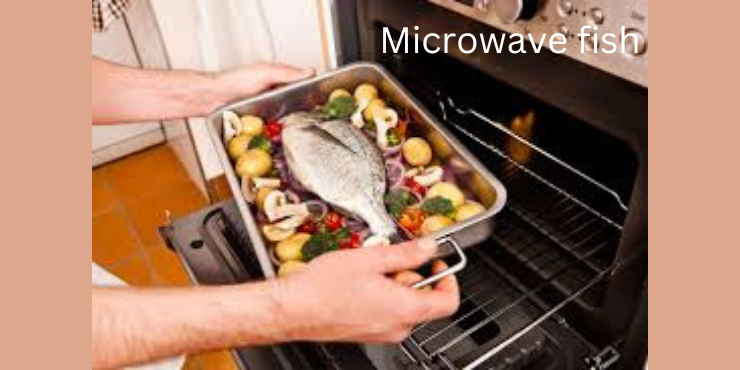Table of Contents
Microwave fish has become increasingly popular due to its convenience, speed, and ability to retain nutrients. While some may be skeptical about cooking fish in a microwave, it can actually produce delicious and perfectly cooked results if done correctly. In this article, we’ll explore the ins and outs of microwave fish cooking, including how it works, the benefits, tips for success, and some delicious recipes to try at home.
Easy Microwave Fish Recipes
It seems like you’re referring to the practice of cooking fish in a microwave. Cooking fish in a microwave can be convenient, but it’s important to do it properly to avoid uneven cooking or drying out the fish. Here are some general tips:
- Choose the right fish: Opt for fish fillets or steaks that are of uniform thickness, as this will ensure even cooking.
- Seasoning: Season the fish with your desired herbs, spices, or marinade. This adds flavor to the fish.
- Microwave-safe dish: Place the seasoned fish in a microwave-safe dish that is large enough to hold it without overcrowding.
- Covering: Cover the dish loosely with microwave-safe plastic wrap or a microwave-safe lid. This helps to trap steam and keep the fish moist during cooking.
- Cooking time: Microwave the fish on high power for about 2-4 minutes per ½ inch thickness of fish. Check for doneness halfway through the cooking time and adjust as needed.
- Resting time: Allow the fish to rest for a minute or two after cooking. This allows the residual heat to continue cooking the fish evenly and allows the juices to redistribute.
- Check for doneness: The fish should be opaque and flake easily with a fork when it’s done. If it’s still translucent and feels firm, continue microwaving in short intervals until fully cooked.
Remember to be cautious when handling hot dishes from the microwave, and always use oven mitts or a kitchen towel to avoid burns. Enjoy your microwave-cooked fish
How Microwave Cooking Works
Understanding microwave radiation

Microwave ovens work by emitting electromagnetic radiation at a frequency that causes water molecules in food to vibrate, generating heat. This heat cooks the food quickly and efficiently.
The science behind cooking fish in a microwave
Fish, being high in moisture content, responds well to microwave cooking. The microwave radiation penetrates the fish, cooking it from the inside out. This results in evenly cooked fish with minimal loss of moisture.
Benefits of Microwave Cooking for Fish
Microwave cooking offers several advantages when it comes to preparing fish:
Retention of nutrients
Unlike traditional cooking methods that may leach nutrients from the food, microwave cooking preserves the nutritional value of fish by cooking it quickly at a lower temperature.
Quick and efficient cooking
Microwaves cook fish in a fraction of the time compared to conventional methods such as baking or grilling, making it an ideal option for busy weeknights.
Minimal cleanup
Since microwave cooking requires little to no added oil or fat, cleanup is a breeze. Simply wash the microwave-safe dish, and you’re done!
Choosing the Right Fish for Microwave Cooking
Not all fish are created equal when it comes to microwave cooking. Here are some factors to consider:
Best types of fish for microwaving
Fish with firm flesh, such as salmon, trout, tilapia, and cod, tend to work best in the microwave. Delicate fish varieties like sole or flounder may not hold up as well.
Considerations for frozen vs. fresh fish
While fresh fish is always preferred for optimal flavor and texture, frozen fish can also be successfully cooked in the microwave. Just be sure to thaw it properly beforehand.
Preparing Fish for Microwave Cooking
Proper preparation is key to achieving delicious microwave fish dishes:
Thawing frozen fish safely
If using frozen fish, thaw it in the refrigerator overnight or use the defrost setting on your microwave. Avoid thawing fish at room temperature to prevent bacterial growth.
Seasoning and marinating tips
Season your fish with your favorite herbs, spices, and marinades to enhance its flavor. Be sure to coat the fish evenly for maximum taste.
Microwave Fish Recipes
Try these simple and flavorful microwave fish recipes:
Simple microwave salmon
- Place a salmon fillet in a microwave-safe dish.
- Drizzle with olive oil and sprinkle with salt, pepper, and fresh herbs.
- Cover with microwave-safe plastic wrap and cook on high for 3-4 minutes, or until the fish flakes easily with a fork.
Lemon herb tilapia
- Lay tilapia fillets in a single layer in a microwave-safe dish.
- Squeeze fresh lemon juice over the fish and sprinkle with chopped herbs like parsley and thyme.
- Cover and microwave on high for 2-3 minutes, or until the fish is opaque and flakes easily.
Garlic butter cod
- Arrange cod fillets in a microwave-safe dish.
- Melt butter with minced garlic and pour over the fish.
- Cover and microwave on high for 4-5 minutes, or until the fish is cooked through and tender.
Tips for Successful Microwave Fish Cooking
Follow these tips to ensure perfect microwave fish every time:
Proper covering techniques
Use microwave-safe plastic wrap or a microwave-safe lid to cover the fish while cooking. This helps trap steam and prevents the fish from drying out.
Rotating for even cooking
If your microwave doesn’t have a rotating turntable, pause halfway through cooking to rotate the dish for even heating.
Checking for doneness
Fish should be opaque and flake easily with a fork when done. If it’s still translucent in the center, continue cooking in 30-second intervals until fully cooked.
Common Mistakes to Avoid
Avoid these common pitfalls when cooking fish in the microwave:
Overcooking
Microwaves cook quickly, so it’s easy to overcook fish. Keep a close eye on it and adjust the cooking time accordingly.
Using inappropriate containers
Only use microwave-safe dishes when cooking fish in the microwave to prevent melting or leaching of harmful chemicals into your food.
Neglecting to rest the fish
Allowing the fish to rest for a few minutes after cooking helps redistribute juices, resulting in a more tender and flavorful dish.
Safety Precautions
To ensure safe microwave fish cooking, keep the following tips in mind:
Avoiding hot spots
Microwaves can create hot spots in food, so be sure to stir or rotate the fish halfway through cooking to ensure even heating.
Handling fish safely
Always handle raw fish with clean hands and utensils to prevent cross-contamination. Wash your hands and surfaces thoroughly after handling raw fish.
Cleaning the microwave after cooking fish
To prevent lingering odors, wipe down the interior of the microwave with a mixture of water and vinegar after cooking fish.
Experimenting with Flavors and Ingredients
Get creative with your microwave fish dishes by experimenting with different flavors and ingredients:
Incorporating different herbs and spices
Try seasoning your fish with exotic spices like curry powder, cumin, or smoked paprika for a unique twist.
Trying out various marinades and sauces
Marinate your fish in a mixture of soy sauce, ginger, and garlic for an Asian-inspired flavor, or slather it with barbecue sauce for a smoky, tangy taste.
Microwave Fish FAQs
- Can all types of fish be cooked in a microwave?
- While most types of fish can be cooked in a microwave, firm-fleshed varieties like salmon, trout, tilapia, and cod tend to work best.
- How do I prevent my fish from becoming rubbery in the microwave?
- To prevent rubbery texture, avoid overcooking the fish. Cook it just until it flakes easily with a fork.
- Is it safe to cook fish in the microwave?
- Yes, it’s safe to cook fish in the microwave as long as it’s done properly. Use microwave-safe dishes and follow recommended cooking times.
- Can I reheat leftover fish in the microwave?
- Absolutely! Reheat leftover fish in the microwave on medium power for short intervals to prevent it from drying out.
- What is the recommended wattage for cooking fish in the microwave?
- Most microwave fish recipes are based on 800-1200 watts. Adjust cooking times accordingly if your microwave has a different wattage.
In conclusion, microwave fish cooking offers a convenient and healthy way to enjoy delicious seafood dishes at home. With the right techniques and recipes, you can achieve restaurant-quality results in minutes. So next time you’re craving fish, don’t hesitate to give your microwave a try!

